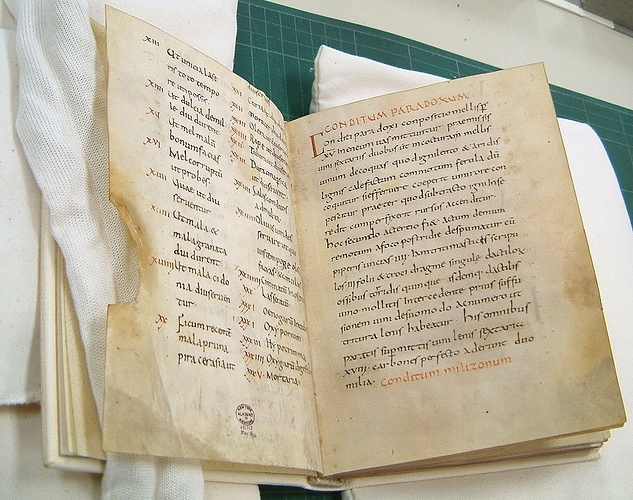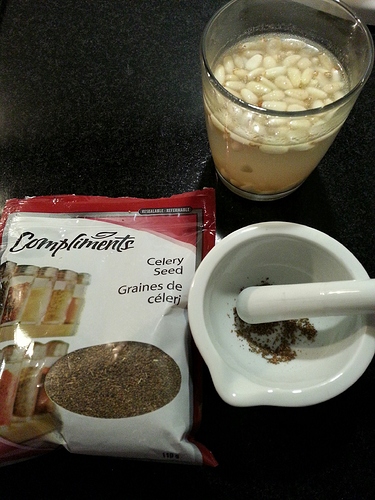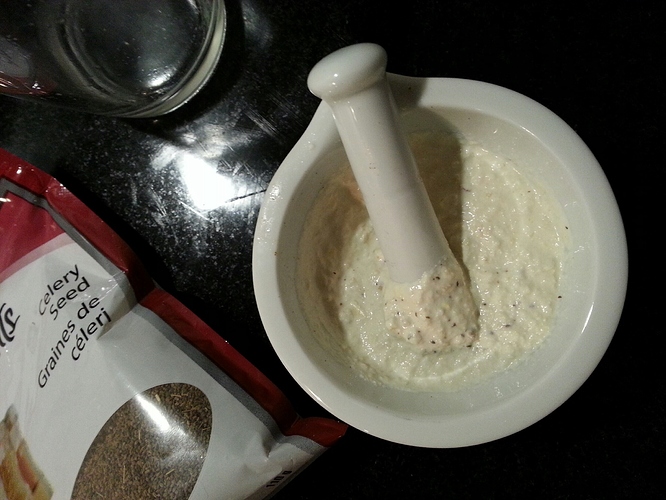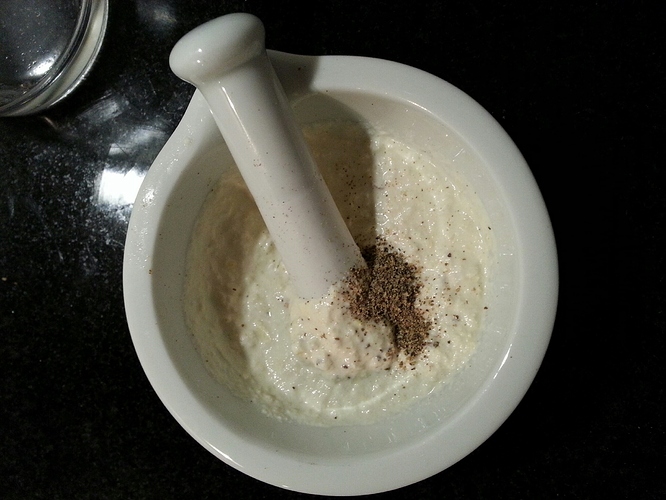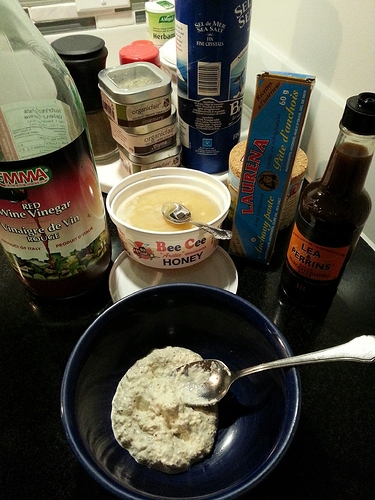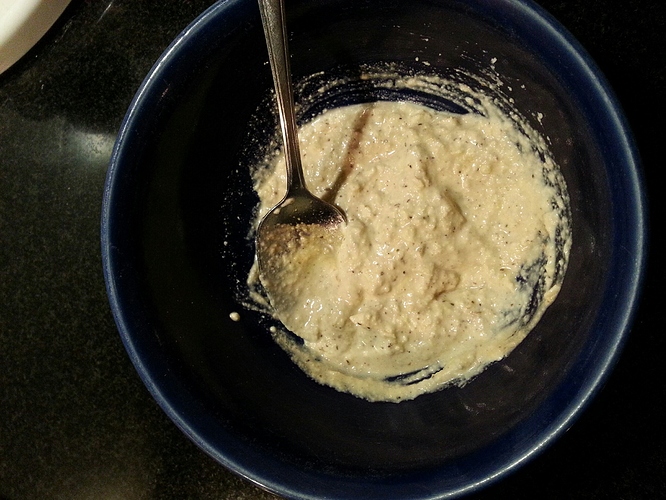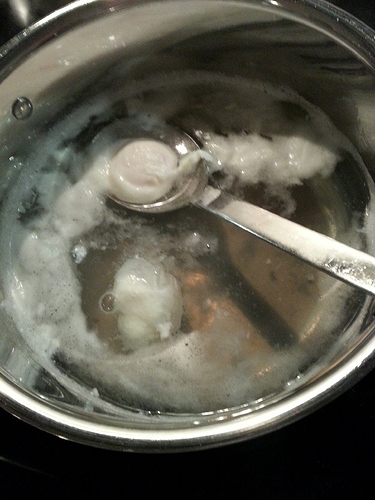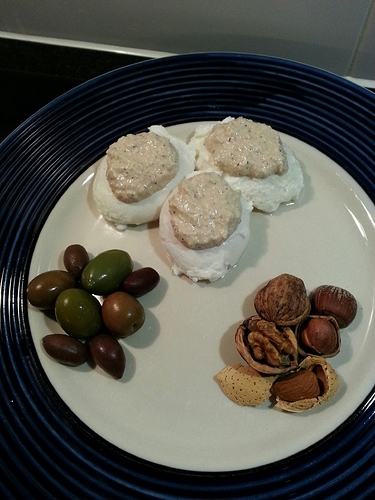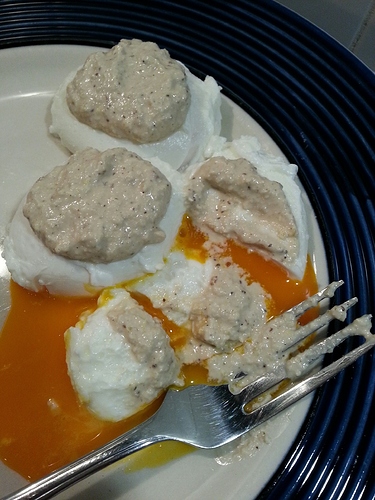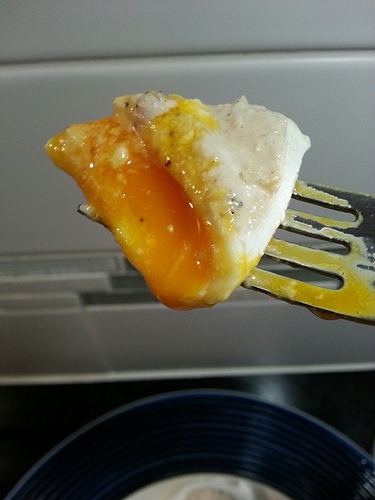The oldest cookbook was compiled in first century AD by a guy named Apicius. He was a foodie’s foodie, and thanks to his Kardashian-like riches and fame, he was able to devote his life to eating and cataloging recipes. To give you an idea how long ago this was, he existed during the reign of the second emperor of Roman Empire, Tiberius (who ruled after Caesar Augustus, and who was followed by Caligula). His statue shown above.
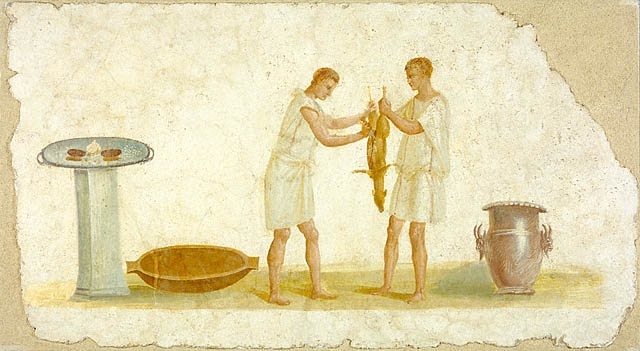
The cookbook by Apicius is called “De Re Culinaria”, and it is full of recipes that both the rich could afford, as well as the commoners. But, what I really like about this cook book is that it is quite obvious how fatty the recipes were. Most are keto compliant.
This recipe is one of those that could afforded by the upper and lower classes. They are soft poached eggs with a luscious, creamy topping made predominantly with crushed pine nuts. Here’s a fresco on a wall in Pompeii that shows what they would have looked like
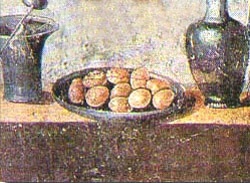
Now…this the recipe written in Latin:
IN OVIS APALIS. PIPER, LIGUSTICUM, NUCLEOS INFUSOS. SUFFUNDES MEL, ACETUM, LIQUAMINE TEMPERABIS.
Loosely translated as “for soft-poached eggs. Mix together pepper, lovage and water-soaked pine nuts. Blend some honey, vinegar and fermented fish sauce”
So, this is the closest I came to making this dish. In the morning, I placed a heaping teaspoon of pine nuts in a glass of water, and let them soak all day long. Then I pulverized dried celery seed In a mortar and pestle. Celery seed closely resembles the taste of lovage (herb).
I then crushed the soaked pine nuts in the mortar and pestle, mixed with the celery seed powder
I then mixed in fresh ground pepper
For the rest of the ingredients, I added a tablespoon of red wine vinegar, 1/8 teaspoon honey, 1/4 teaspoon anchovy paste and 1/2 teaspoon Worcestershire sauce
This is what the resultant sauce looked like. Very similar to the Pompeiian fresco perhaps
I then poached a few eggs, not too long to keep yolk soft and runny
Final plating. Could this be what an ancient Roman person would eat for dinner?
The eggs were nice and runny
The perfect bite (which was delicious!! Like a nutty flavoured Benedict sauce)


